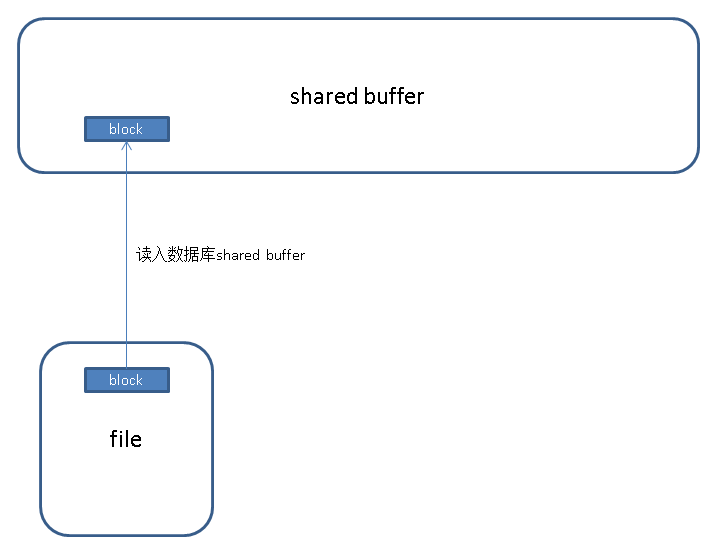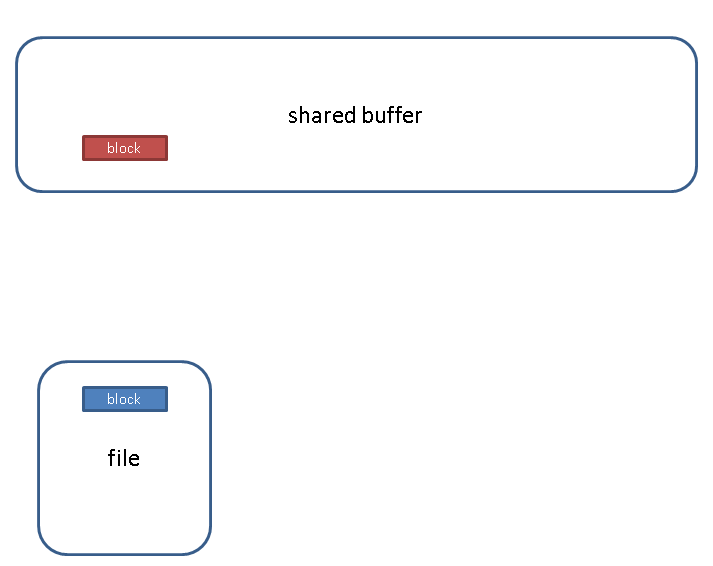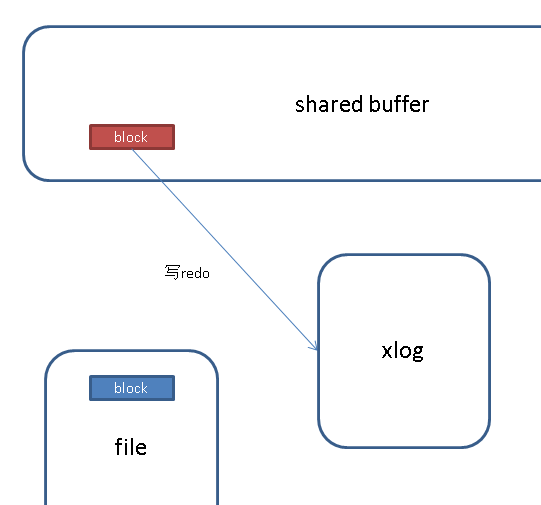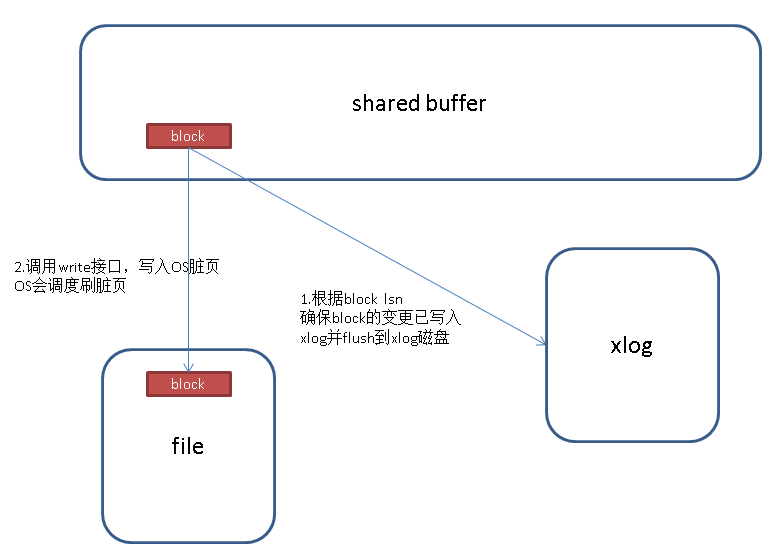PostgreSQL 的数据可靠性是依赖XLOG的实现的,所有的对数据块的变更操作在write到磁盘前,一定是确保这个变更产生的REDO会先写到XLOG,并保证XLOG已落盘。
也就是说流程是这样的:
.1. 首先将需要变更的块从文件读入shared buffer 
.2. 变更shared buffer中block的内容 
.3. 将shared buffer中block变更的内容写入XLOG,如果是checkpoint后第一次变更该块,则写full page。(通过参数控制是否要写full page)。 
.4. 在bgwriter将shared buffer中的脏块write到os dirty page前,会确保它对应的XLOG已经落盘,通过脏块的LSN来确保。 
所以问题来了,如果用户使用了异步提交,即synchronous_commit=off,会怎样呢?
也没有问题,因为在第四步,一定是会保证造成脏页的XLOG是先落盘的。
所以开启synchronous_commit=off,只会造成丢XLOG,绝对不会造成数据不一致。
确保可靠性和一致性的代码如下:
/*
* Main entry point for bgwriter process
*
* This is invoked from AuxiliaryProcessMain, which has already created the
* basic execution environment, but not enabled signals yet.
*/
void
BackgroundWriterMain(void)
{
...
/*
* Do one cycle of dirty-buffer writing.
*/
can_hibernate = BgBufferSync();
...
/*
* BgBufferSync -- Write out some dirty buffers in the pool.
*
* This is called periodically by the background writer process.
*
* Returns true if it's appropriate for the bgwriter process to go into
* low-power hibernation mode. (This happens if the strategy clock sweep
* has been "lapped" and no buffer allocations have occurred recently,
* or if the bgwriter has been effectively disabled by setting
* bgwriter_lru_maxpages to 0.)
*/
bool
BgBufferSync(void)
{
...
/* Execute the LRU scan */
while (num_to_scan > 0 && reusable_buffers < upcoming_alloc_est)
{
int buffer_state = SyncOneBuffer(next_to_clean, true);
...
/*
* SyncOneBuffer -- process a single buffer during syncing.
*
* If skip_recently_used is true, we don't write currently-pinned buffers, nor
* buffers marked recently used, as these are not replacement candidates.
*
* Returns a bitmask containing the following flag bits:
* BUF_WRITTEN: we wrote the buffer.
* BUF_REUSABLE: buffer is available for replacement, ie, it has
* pin count 0 and usage count 0.
*
* (BUF_WRITTEN could be set in error if FlushBuffers finds the buffer clean
* after locking it, but we don't care all that much.)
*
* Note: caller must have done ResourceOwnerEnlargeBuffers.
*/
static int
SyncOneBuffer(int buf_id, bool skip_recently_used)
{
...
FlushBuffer(bufHdr, NULL);
...
/*
* FlushBuffer
* Physically write out a shared buffer.
*
* NOTE: this actually just passes the buffer contents to the kernel; the
* real write to disk won't happen until the kernel feels like it. This
* is okay from our point of view since we can redo the changes from WAL.
* However, we will need to force the changes to disk via fsync before
* we can checkpoint WAL.
*
* The caller must hold a pin on the buffer and have share-locked the
* buffer contents. (Note: a share-lock does not prevent updates of
* hint bits in the buffer, so the page could change while the write
* is in progress, but we assume that that will not invalidate the data
* written.)
*
* If the caller has an smgr reference for the buffer's relation, pass it
* as the second parameter. If not, pass NULL.
*/
static void
FlushBuffer(volatile BufferDesc *buf, SMgrRelation reln)
{
...
/*
* Force XLOG flush up to buffer's LSN. This implements the basic WAL
* rule that log updates must hit disk before any of the data-file changes
* they describe do.
*
* However, this rule does not apply to unlogged relations, which will be
* lost after a crash anyway. Most unlogged relation pages do not bear
* LSNs since we never emit WAL records for them, and therefore flushing
* up through the buffer LSN would be useless, but harmless. However,
* GiST indexes use LSNs internally to track page-splits, and therefore
* unlogged GiST pages bear "fake" LSNs generated by
* GetFakeLSNForUnloggedRel. It is unlikely but possible that the fake
* LSN counter could advance past the WAL insertion point; and if it did
* happen, attempting to flush WAL through that location would fail, with
* disastrous system-wide consequences. To make sure that can't happen,
* skip the flush if the buffer isn't permanent.
*/
if (buf->flags & BM_PERMANENT)
XLogFlush(recptr);
...
/*
* Ensure that all XLOG data through the given position is flushed to disk.
*
* NOTE: this differs from XLogWrite mainly in that the WALWriteLock is not
* already held, and we try to avoid acquiring it if possible.
*/
void
XLogFlush(XLogRecPtr record)
{
XLogRecPtr WriteRqstPtr;
XLogwrtRqst WriteRqst;
...
XLogWrite(WriteRqst, false);
...
/*
* Write and/or fsync the log at least as far as WriteRqst indicates.
*
* If flexible == TRUE, we don't have to write as far as WriteRqst, but
* may stop at any convenient boundary (such as a cache or logfile boundary).
* This option allows us to avoid uselessly issuing multiple writes when a
* single one would do.
*
* Must be called with WALWriteLock held. WaitXLogInsertionsToFinish(WriteRqst)
* must be called before grabbing the lock, to make sure the data is ready to
* write.
*/
static void
XLogWrite(XLogwrtRqst WriteRqst, bool flexible)
{
...
/*
* If asked to flush, do so
*/
if (LogwrtResult.Flush < WriteRqst.Flush &&
LogwrtResult.Flush < LogwrtResult.Write)
{
/*
* Could get here without iterating above loop, in which case we might
* have no open file or the wrong one. However, we do not need to
* fsync more than one file.
*/
if (sync_method != SYNC_METHOD_OPEN &&
sync_method != SYNC_METHOD_OPEN_DSYNC)
{
if (openLogFile >= 0 &&
!XLByteInPrevSeg(LogwrtResult.Write, openLogSegNo))
XLogFileClose();
if (openLogFile < 0)
{
XLByteToPrevSeg(LogwrtResult.Write, openLogSegNo);
openLogFile = XLogFileOpen(openLogSegNo);
openLogOff = 0;
}
issue_xlog_fsync(openLogFile, openLogSegNo);
}
/* signal that we need to wakeup walsenders later */
WalSndWakeupRequest();
LogwrtResult.Flush = LogwrtResult.Write;
}
...异步提交代码如下
/*
* Check if we want to commit asynchronously. We can allow the XLOG flush
* to happen asynchronously if synchronous_commit=off, or if the current
* transaction has not performed any WAL-logged operation or didn't assign
* a xid. The transaction can end up not writing any WAL, even if it has
* a xid, if it only wrote to temporary and/or unlogged tables. It can
* end up having written WAL without an xid if it did HOT pruning. In
* case of a crash, the loss of such a transaction will be irrelevant;
* temp tables will be lost anyway, unlogged tables will be truncated and
* HOT pruning will be done again later. (Given the foregoing, you might
* think that it would be unnecessary to emit the XLOG record at all in
* this case, but we don't currently try to do that. It would certainly
* cause problems at least in Hot Standby mode, where the
* KnownAssignedXids machinery requires tracking every XID assignment. It
* might be OK to skip it only when wal_level < hot_standby, but for now
* we don't.)
*
* However, if we're doing cleanup of any non-temp rels or committing any
* command that wanted to force sync commit, then we must flush XLOG
* immediately. (We must not allow asynchronous commit if there are any
* non-temp tables to be deleted, because we might delete the files before
* the COMMIT record is flushed to disk. We do allow asynchronous commit
* if all to-be-deleted tables are temporary though, since they are lost
* anyway if we crash.)
*/
if ((wrote_xlog && markXidCommitted &&
synchronous_commit > SYNCHRONOUS_COMMIT_OFF) ||
forceSyncCommit || nrels > 0)
{
XLogFlush(XactLastRecEnd);
/*
* Now we may update the CLOG, if we wrote a COMMIT record above
*/
if (markXidCommitted)
TransactionIdCommitTree(xid, nchildren, children);
}
else
{
/*
* Asynchronous commit case:
*
* This enables possible committed transaction loss in the case of a
* postmaster crash because WAL buffers are left unwritten. Ideally we
* could issue the WAL write without the fsync, but some
* wal_sync_methods do not allow separate write/fsync.
*
* Report the latest async commit LSN, so that the WAL writer knows to
* flush this commit.
*/
XLogSetAsyncXactLSN(XactLastRecEnd);
/*
* We must not immediately update the CLOG, since we didn't flush the
* XLOG. Instead, we store the LSN up to which the XLOG must be
* flushed before the CLOG may be updated.
*/
if (markXidCommitted)
TransactionIdAsyncCommitTree(xid, nchildren, children, XactLastRecEnd);
}

